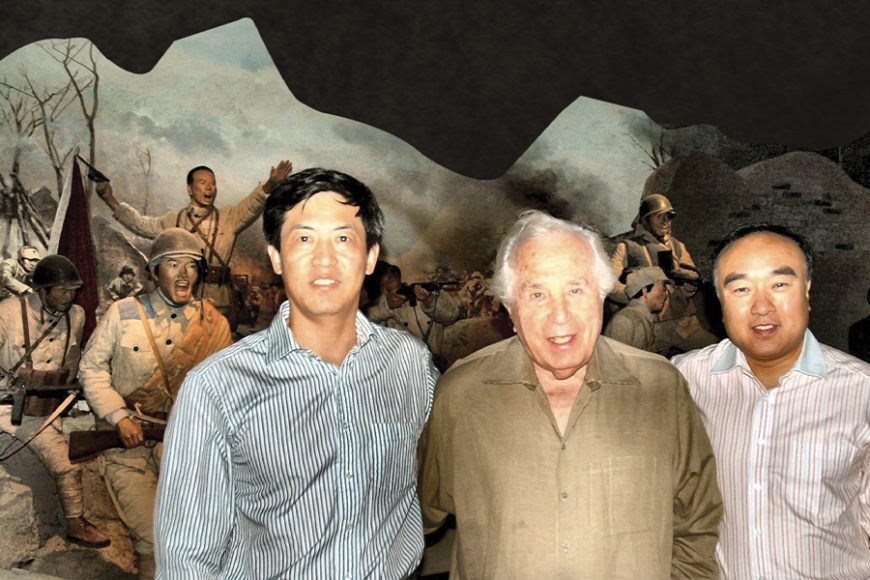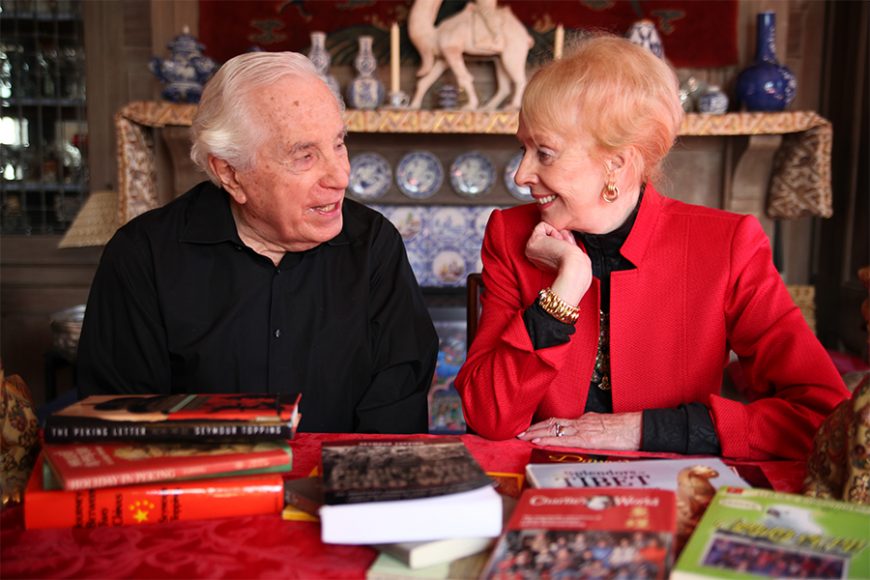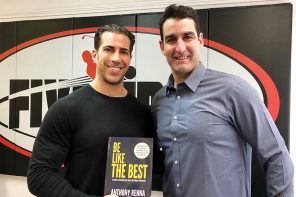On Dec. 11, Seymour Topping — who with wife Audrey has been one of our beloved Waggers — turned 98. And while we all agree that no one deserves retirement more than this former foreign correspondent, foreign editor, deputy managing editor and managing editor of The New York Times — to say nothing of administrator of the Pulitzer Prizes and San Paolo professor emeritus of international journalism at Columbia University — he and Audrey are never far from our thoughts.
We wanted to look back at Top — as he is affectionately known — from the viewpoint of his long career as a foreign correspondent, particularly since he skillfully wove his love of storytelling in the hotspots with his love for Audrey, a photojournalist and filmmaker in her own right.
Born in Harlem and raised in Queens and the Bronx, where he developed a love of polo, Top first encountered war as an infantry officer in the Pacific theater during World War II, after graduating from the University of Missouri School of Journalism with a B.A. in journalism. No sooner was the war over than Top was back in action, this time as a foreign correspondent for the Associated Press who would cover the fall of Nanking during the Chinese Civil War.
But first romance was in the air as Top fell in love with Audrey — the daughter of Ambassador Chester Ronning, a senior Canadian diplomat in China; granddaughter of missionaries there and a student at Nanking University. It would blossom into a whirlwind of dinner dates and dancing, picnics and a rickshaw filled with roses before the real whirlwind blew in. Audrey, her mother and siblings would be evacuated to Tokyo and then head back to Canada, where she enrolled at the University of British Columbia in Vancouver. Unbeknown to her, Top was caught behind enemy lines as Chiang Kai-shek’s Nationalist Army fled south, along with thousands of refugees, and the Communists advanced on Nanking, now a city on fire.
Here Top picks up the story from a 2017 piece in WAG:
“At 6 p.m., I picked up Bill Kuan, a Chinese reporter, who worked for the Agence France Presse. After inspecting the airfields, which we found wrecked, we headed for the Nanking Hotel to find the Peace Preservation Committee, appointed to hand over the city to the Communists to minimize damage in the takeover. Committee members said that they had made contact with the Communists and delegates would meet their advancing troops.
“Hoping to meet the Communists I drove slowly toward the Northwest Gate at 3 a.m. Suddenly, I heard a command to halt. Two soldiers with rifles pointing at us emerged from the shrubbery beside the road. They were the point soldiers of the first column of Gen. Chen Yi’s Communist troops, ordered on forced march to enter Nanking. The officer, who was to meet the Peace Preservation Committee, questioned Kuan and me, then ordered us at gunpoint back into the city.
“I drove my Jeep back into Nanking, past the burning Judicial Yuan to the city telegraph office. There Kuan and I flipped a coin to determine who would file first. Kuan won and sent a three-word flash: “Reds Take Nanking.” My 65-word dispatch followed. Immediately after my transmission, Communist troops cut the landline between Nanking and Shanghai. When Kuan’s dispatch reached the foreign desk in Paris, the editors waited for additional detail but radio transmission was out until morning. The delay denied Kuan a world beat and bestowed it on me. My dispatch went out immediately on the AP wires. Through the years, Chinese websites have carried a photograph of Mao Zedong reading the front page of a Peking newspaper, citing my dispatch on the Communist seizure of Nanking.
“At first, I was imprisoned by the Communists, who thought my typewriter meant I was a spy. Two weeks later, I was freed and spent the next six months reporting from Communist-occupied Nanking. After Mao’s establishment of The People’s Republic of China, I flew to Audrey’s home in Camrose, Alberta, where we were married.”
They didn’t stay there long. Hong Kong would become their base as they covered the new regime. Soon Top was assigned to cover the French Indochina War (1949-51), which again found the Toppings managing to continue family life amid conflict. They had honeymooned at Angkor Wat, Cambodia, and were expecting the first of their five daughters, Susan, in 1950 when trouble hit Saigon.
The city, Top recalled in 2017, “was under direct attack not far from the (French military hospital). When Audrey was wheeled into the delivery room, you could hear the artillery fire and feel the hospital shake. The doctor who delivered Susan was also caring for the wounded and his scrubs were stained with their blood. Audrey carried through in her usual courageous manner. After Susan was settled, she insisted I go back to the AP office to report on the battle, which was a critical turning point in the war.”
John F. Kennedy, then a congressman, asked to see Top and congratulate him as a long-serving foreign correspondent, Audrey remembered. “He saw Susan and told me I had the calm look of a Modigliani portrait. I will never forget that.”
After that, it was off to England on the diplomatic beat. The couple attended Queen Elizabeth II’s coronation and weathered the birth of daughter number two, Karen, at Queen Mary’s Nursing Home during the infamous smog of 1952. (Queen Mary herself, Elizabeth’s grandmother, visited, presenting the baby with a teddy bear.)
Though World War II was over, there were still rationing privations, which had Audrey worried about enough food for her babies, which would include daughter number three, Lesley, a year later. The family would soon feel the effects of the war in a starker way as Top covered a divided Germany from 1955 to ’58. There, daughter number four, Robin, was born in the American military hospital in West Berlin.
Joining The New York Times, Top took his growing family off to the Soviet Union at the height of Cold War, including the beginnings of the space race and the Cuban Missile Crisis. (In 1983 as managing editor of The Times, he would interview Cuban President Fidel Castro over mojitos, daquiris and Chivas Regal, with Castro revealing his love for the novels of one of the island’s most famous sojourners, Ernest Hemingway.)
In 1963, Top went back to Hong Kong, this time to cover the Vietnam War as The Times’ chief correspondent in Southeast Asia. Audrey — who had been working for NBC, producing a film on the Kremlin and writing 16 pieces for The New York Times Magazine — got a rare visa for Communist China to write for The Times during the Cultural Revolution.
Top’s career at The Times continued to flourish and he was appointed foreign editor in 1966, followed by managing editor. The couple’s fifth daughter, Joanna, was born in l967 after the couple moved to Scarsdale, where they have remained ever since.
Having seen much of war, Top has always known a thing or two about love, always crediting Audrey for his success:
“Not only did she take wonderful care of our children and me in some very difficult circumstances but was a tremendous asset who made all the difference in my professional life.”






